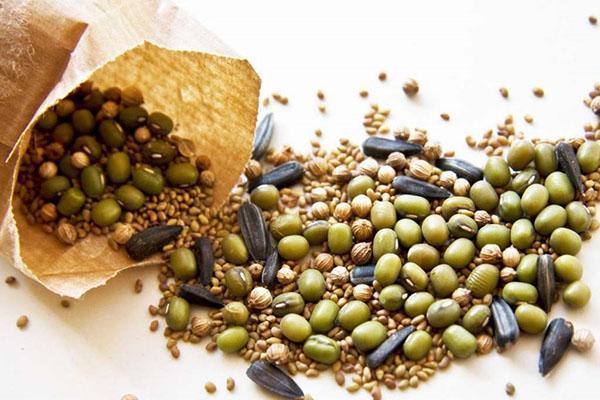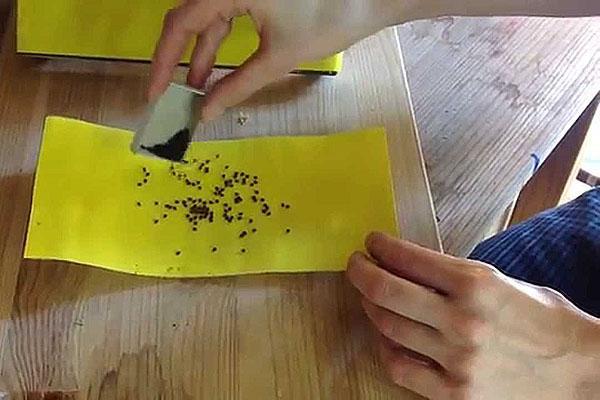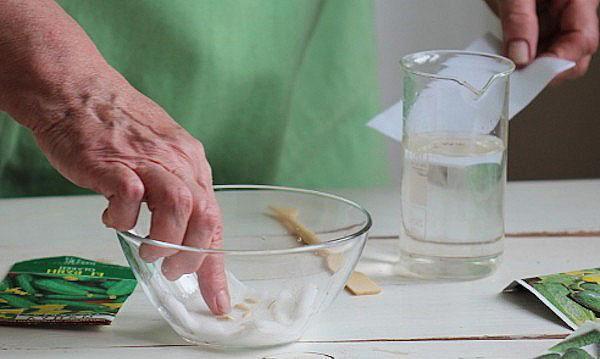How is scarification of seeds of different plants carried out?
 Seed scarification is a procedure that allows the seeds to germinate faster. At home, it is carried out in several ways. All of them are effective, the main thing is to adhere to the rules. If everything is done correctly, then getting quality plants will not be difficult.
Seed scarification is a procedure that allows the seeds to germinate faster. At home, it is carried out in several ways. All of them are effective, the main thing is to adhere to the rules. If everything is done correctly, then getting quality plants will not be difficult.
Scarification of seeds: what is it for, the main types

There are several types of this procedure. All of them differ in complexity and method of implementation:
- mechanical;
- chemical;
- thermal.
You should also understand which seeds can be scarified and for which ones it is not suitable. It is recommended to carry out the procedure with "hard" types of grains and those that have a stone shell.
The most unusual but effective process of scarification in nature is the passage of the kernels through the stomach of birds.
In nature, seeds also go through this process. The structure of the shell in the soil is affected by various acids, sand, contact with small pebbles, rubble. In nature, scarification is carried out by bacteria, wind and rain. All this helps to destroy the protective layer of the grains and leads to their rapid germination.
Thermal scarification
 This is the most popular type of grain processing. It is sometimes called hydrothermal scarification. The shell of the grains is destroyed by exposure to different temperatures.
This is the most popular type of grain processing. It is sometimes called hydrothermal scarification. The shell of the grains is destroyed by exposure to different temperatures.
This requires the use of two medium-sized containers. Fill one with hot water (but not boiling water), and the second with cold. Put the seeds in a cloth bag and tie well. Then, alternately lower it into the container. Keep the bag in each vessel for a few seconds. Carry out the procedure until the grains change their shape and begin to crack.
After each procedure, the seeds are carefully examined. Those that have burst are put aside, and with the rest they continue to carry out scarification.
You can also achieve the desired result with the help of steam. Its temperature should be within 1500 C. It is difficult to carry out such a procedure at home; it is much easier to use alternate lowering of seeds in water (cold-hot) for scarification.
Chemical scarification of seeds at home
 Many people do not know about this method of scarification. It is used extremely rarely, since it is not suitable for all types of seeds. To create this method, scientists pushed a process that is carried out in the stomach of birds when the seeds are ingested.
Many people do not know about this method of scarification. It is used extremely rarely, since it is not suitable for all types of seeds. To create this method, scientists pushed a process that is carried out in the stomach of birds when the seeds are ingested.
To carry out chemical scarification at home, you will need to take a glass or ceramic container. A metal vessel will not work for this procedure.
Put the grains at the bottom of the bowl and pour them on top with a 3% solution of sulfuric or hydrochloric acid. You can also use other concentrated acids.
In this state, the planting material is kept for at least 12 hours. Then drain the liquid, and rinse the seeds thoroughly under running water.
For pine, it is best to use a 2% chlorine solution.
When using the chemical scarification method, remember that you should not dilute the acid with water. The exception is stale larch grains and pine trees... These seeds are infused in a 1% lime solution, which is diluted with water in advance.
Mechanical scarification: a feature of the procedure
 To carry out this method, a scarifier is used. But since such a device is quite expensive, it is often used only for industrial purposes. At home, other methods are used for mechanical action on seeds. A good option is to pierce the shell with an awl or knife, but only very sharp.
To carry out this method, a scarifier is used. But since such a device is quite expensive, it is often used only for industrial purposes. At home, other methods are used for mechanical action on seeds. A good option is to pierce the shell with an awl or knife, but only very sharp.
Mechanical scarification is used for seeds that have a hard shell.
Less often, the shell of the grains is erased with a file. At home, grains are also cleaned on a fine grater or lightly pounded in a kitchen mortar. For mechanical scarification, sand, small stones are used, which are placed together with the seeds in a bag and carefully rubbed.
Sanding the grains with sandpaper is also an effective method. For this, the seeds are placed between two sheets and carefully rubbed. Large grains are placed in a jar, covered with sandpaper and a lid. Shake the seeds for 10-15 minutes, while making sure that they all come into contact with the sandpaper.
After mechanical scarification, the planting material will need to be moved into a container and filled with a small amount of water. The grains are kept in liquid for 12 hours. After that, the seeds can be planted in open ground.
What seeds need to be scarified
 This procedure is essential for grains with a dense shell. These include plum, rosehip, peach, blackthorn, viburnum, bird cherry, dogwood, pistachios.
This procedure is essential for grains with a dense shell. These include plum, rosehip, peach, blackthorn, viburnum, bird cherry, dogwood, pistachios.
The higher the temperature difference, the faster the desired result can be obtained.
Grains from lychnis, gypsophila, canna just need to break. This is enough for moisture and oxygen to penetrate inside and accelerate the germination process.
As for the seeds castor bean, pelarogia, then it will be enough to process them with sandpaper. Sweet peas, lupine, aconin germinate faster if they are thoroughly scalded with boiling water, and then placed in a container with ice water. It is necessary to keep the grain in this state for a day. At the end of this time, remove the planting material from the water and spread it on paper or towel.
 Grains of hawthorn, gleditsia must be put in a cloth, tied tightly and dipped in boiling water. After that, immediately put in a container with ice. Keep for no more than 30 seconds in each vessel. It is necessary to repeat the procedure until the grains increase significantly in size.
Grains of hawthorn, gleditsia must be put in a cloth, tied tightly and dipped in boiling water. After that, immediately put in a container with ice. Keep for no more than 30 seconds in each vessel. It is necessary to repeat the procedure until the grains increase significantly in size.
If the seeds hatch, but there is still snow on the street, it is recommended not to keep the grains, but to sow them in a flowerpot as early as possible.
As for primrose and aquilegia, the seeds must be immediately placed in cold water and kept in a cold place for 12 hours. Then move the container with seeds to a warm place for 12 hours. Repeat the procedure until the shell begins to crack.
Scarification is an important procedure that requires care and responsibility. If everything is done correctly, the seeds will sprout in the shortest possible time. For example, blackberry seeds that have not been processed germinate for 2-3 years, but if they are scarified, then the first shoots appear in a month.
Having analyzed all methods of scarification, it is safe to say that the simplest is the mechanical and thermal methods. You do not need to have special skills to carry them out. But despite this, such procedures should be carried out very carefully. Indeed, even the smallest violation of the rules can lead to the unsuitability of the planting material.
Here you write the phrase "put in boiling water for 12 hours."How do you understand? Keep the vessel on fire and constantly maintain t100 degrees? Otherwise, in an hour the water is already warm, in two or three it is cold.
The article contains a mistake. We have updated the article and now you can get reliable information about primrose seed scarification.
HOW TO SCARIFY DONNIK SEEDS IN HOME CONDITIONS
At one of the forums of beekeepers, I once met information that they sprinkle seeds on a flat surface and rub them by hand with bricks. Or the seeds are passed twice through a clover grater. And there are also special such devices for grinding the hard shells of sweet clover seeds.